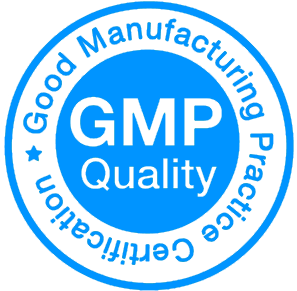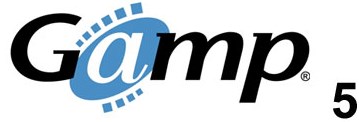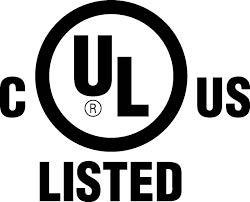System options
Explosion proof
There are cases where you have to work with flammable substances, such as ethanol, methanol, benzene, cyclohexane, Pentane, Pyridine, Acetone, etc…
In all these cases it is necessary to observe the safety standards in force in your country and refer to the ATEX standards for European Economic Area (EEA) and all countries that accept the European standards or NPFA70/NEC 500 for North America Economic Area (NAFTA).
These two regulations are not compatible, therefore the regulation to be applied is chosen based on the place of installation of the machine. NPFA70/NEC 500 is not accepted in European Economic Area (EEA) and ATEX is not accepted in North America Economic Area (NAFTA).
Moreover, there are different cases, which can be more or less restrictive, depending on the flammable substance used. We have a long experience in the construction of Ex equipment. We can certify the machine for Zone 1 or Zone 2 (2GD or 3GD) ATEX for European Economic Area (EEA) or Class 1 Dision 1 or Class 1 Division 2 for North America Economic Area (NAFTA).
We use safe instrumentation intrinsic (ia/ib) and Ex barriers for galvanic separation to meet the requirements of the regulations in cases of high danger or equipment and instruments certified for Zone 2 or Division 2 without the use of barriers for galvanic separation.

HACCP, GMP and GAMP5
The Hazard Analysis Critical Control Points (HACCP) guideline must be taken into account when designing the machinery for the food and food supplement industry. The Hazard Analysis Critical Control Points system that was developed to ensure the safety of food for United States astronauts nearly 30 years ago. It identifies any hazards that must be prevented eliminated or reduced. HACCP system is internationally accepted as the system of choice for food safety management.
Materials in contact with the product must respect the guideline indication in order not to release particles or contaminants in the food. We deliver all documentation necessary to proof the material used in the construction of our systems are stainless steel and compliant to the HACCP guidelines.
A Good Manufacturing Practice (GMP) is a production and testing practice that helps to ensure a quality product. GMP guideline give us a guidance for the manufacturing of active pharmaceutical ingredients (APIs) under an appropriate system for managing quality. It is also intended to help ensure that APIs meet the quality and purity characteristics that they purport, or are represented, to possess.
We deliver all documentation requested during the qualification procedure by the regional authority like DDS (Detailed Design Specification), FRS (Functional Requirements Specification), DQ (Design Qualification), FAT (Factory Acceptance Test), SAT (Site Acceptance Test), IQ (Installation Qualification), OQ (Operational Qualification).
The Good Automated Manufacturing Practice (GAMP5) guidelines relate to the Regulated company and their good manufacturing practices (GMP). GAMP5 focuses on the whole system and the end product, whereas the Food and Drug Administration (FDA) protocol focuses on each process and stage of production that contributes to the end product. It is important to know that FDA guidances are incorporated into the GAMP guidelines.
As the GAMP 5 guidelines have “Automated” built into the name and their philosophy, they envision process and system (computer) validation as integrated entities and not indicated in separate document, named 21 CFR Part 11 for the FDA protocol. An automated process is tested as an installation, operational, and performance qualification to be certain that the automated procedure has been properly installed, tested, and used. Any GMP machinery should have a GAMP5 software automation. All our systems are GAMP5 compliant.



PED/ASME
Separeco equipment can be PED or ASME certified. PED is accepted in Europe and many other countries like South America, Middle East, Africa, Asia, etc., while ASME is accepted in North America and other countries accepting ASME regulations.
PED
Pressure Equipment Directive (PED) 2014/68/EU applies to the design, manufacture, and conformity assessment of stationary pressure equipment. PED aims to guarantee free movement of the products in its scope while ensuring a high level of safety and it’s mandatory in European Economic Area (EEA) or countries accepting European certification, not accepted in North America Economic Area (NAFTA).
If you are based in Europe, do not purchase ASME certified equipment.
In order to be considered regular and therefore marketed, pressure equipment must pass rigorous tests carried out by a certification body; only if the products are considered compliant, they can obtain the PED certification.
It has been mandatory throughout the EU since 19 July 2016. The Pressure Equipment Directive sets out the standards for the design and fabrication of pressure equipment (“pressure equipment” means steam boilers, pressure vessels, piping, safety valves and other components and assemblies subject to pressure loading).
It also sets the administrative procedures requirements for the “conformity assessment” of pressure equipment, for the free placing on the European market without local legislative barriers.
ASME
The American Society of Mechanical Engineers (ASME) and its code ASME Boiler and Pressure Vessel Code – BPVC, provides rules for the design, fabrication, installation, inspection, care, and use of boilers, pressure vessels. ASME certification is mandatory in North America Economic Area (NAFTA) or countries accepting North American certification, not accepted in European Economic Area (EEA).
If you are based in North America, do not purchase PED certified equipment.
ASME Section VIII provides requirements applicable to the design, fabrication, inspection, testing, and certification of pressure vessels operating at either internal or external pressures exceeding 15 psig.
Specific requirements apply to several classes of material used in pressure vessel construction, and also to fabrication methods such as welding, forging, and brazing.
It contains mandatory and nonmandatory appendices detailing supplementary design criteria, nondestructive examination, and inspection acceptance standards. Rules pertaining to the use of the U, UM, and UV ASME Product Certification Marks are also included.

Before purchasing any pressure equipment, please verify the regulation in force in your country. Do not purchase any pressure equipment that is not compliant with your country's regulation and required certification, or you likely be asked to replace that equipment by your local authority.
UL/CE
Separeco equipment can be CE or UL certified.
CE is accepted in Europe and many other countries like South America, Middle Est, Africa, Asia, etc. while UL is accepted in Noth America.
If you are based in North America, then UL or CSA certification is the right choice They certify products, facilities, processes or systems based on industry-wide standards. By doing so, they issue over twenty different UL Certifications for a wide-range of categories. Certain Marks are country specific and will never be used or seen in the United States or Canada and vice versa. There is no such thing as general UL approval, instead they break up their certification into being listed, recognized, or classified. UL Listed Service is given to manufacturers that produce products that meet UL’s standards and gives the manufacturer authorization to test products and apply the UL mark themselves. CE mark is not accepted in North America Economic Area (NAFTA).
If you are based in North America, do not purchase CE certified equipment.
If you are based in European Economic Area (EEA) or countries accepting European certification, then CE mark is mandatory. The CE mark on a product indicates that the manufacturer or importer of that product affirms its compliance with the relevant EU legislation and the product may be sold anywhere in the European Economic Area (EEA) or countries accepting European certification. UL or CSA marks are not accepted in European Economic Area (EEA).
If you are based in Europe, do not purchase UL or CSA certified equipment.

Before purchasing any equipment, please verify the regulation in force in your country. Do not purchase any equipment is not compliant with your country regulation and required certification, or you likely be asked to replace that equipment by your local authority



